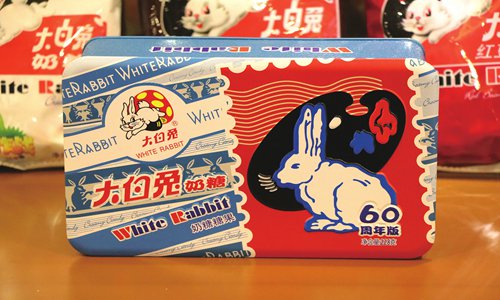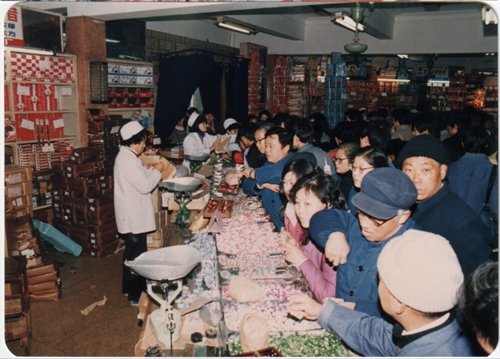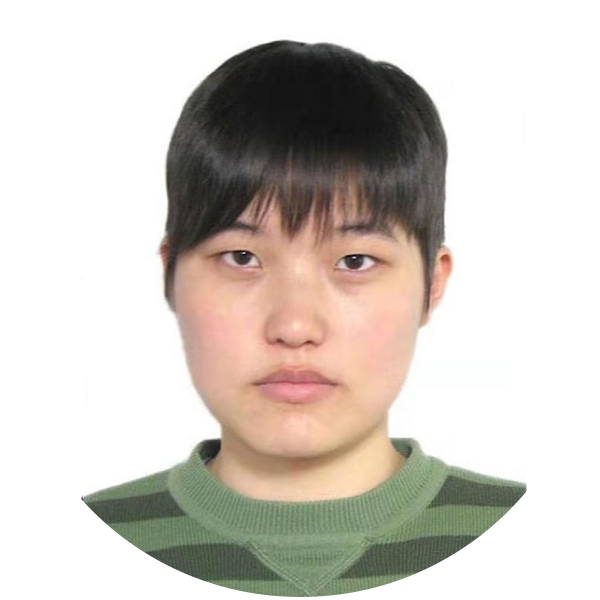
White Rabbit's new candy packaging design, which celebrates the rabbit's 60th birthday in 2019 Photo: Li Qiaoyi/GT

Shoppers snap up White Rabbit sweets. Photo: Courtesy of Guan Sheng Yuan Food
Warner Brothers' Bugs Bunny can easily outshine his fellow rabbits in most parts of the world, notably the US, where the iconic cartoon character was created in 1938. But in China, the carrot-chomping icon might well lose to White Rabbit, China's most open-minded rabbit, who has served as a mascot for one of the country's most famous candy brands since 1959.
On the outside of the White Rabbit Creamy Candy wrappers, the Shanghai-based rabbit is shown sitting quietly or sprinting with a bright smile, a vivid depiction of the national candy brand's cautious yet flexible approach to reform along with the country's continuing efforts to instill vitality into its State sector over the past few decades.
"Too much change risks distancing consumers away from the national brand, while a change too small might prove insufficient in revitalizing the 59-year-old rabbit," Yao Kaiwen, a brand planning manager of State-owned Guan Sheng Yuan Food Co, the candy manufacturer, told the Global Times at the company's factory in southern Shanghai. In an exhibition room at the factory, a variety of packages and flavors are on show, as well as a few spinoff products from the rabbit.
The story of White Rabbit, whose reputation overshadows that of its owner - Guan Sheng Yuan Food - dates back to 1943 when a private company in Shanghai launched ABC Mickey Mouse Sweets, drawing inspiration from the famed Disney rodent. The candy wrappers didn't feature White Rabbit until in 1959 as the company, having been nationalized, needed a makeover.
The remodeled candies featuring the Chinese-style rabbit soon became hugely popular, creating the lasting legend of White Rabbit. During Richard Nixon's historic China visit in 1972, former Premier Zhou Enlai, a big fan of the sweets, sent White Rabbit candies as a gift to the then US president. It is said that the move is what opened up overseas markets for White Rabbit. At that point, the sweets became one of the Easter gifts that got snapped up in the US.
The start of reform and opening-up, which gave State-owned enterprises (SOEs) more leeway in decision-making as regards marketing and technological innovation, apparently added fuel to the candy brand's pursuit of business growth.
Adding to its fame at home, new flavors and new packaging designs have contributed to its popularity in the US and European markets, where there has been an uptick in sales during holidays such as Halloween, Easter and Christmas, said Chen Hong. Joining Guan Sheng Yuan in 1992, Chen is now a manager of the technology and quality control department. Overseas sales of the snack, available in more than 40 countries and regions, are up 10 percent this year compared with last year, according to the company.
Also noteworthy is the change in the rabbit owner's shareholding that epitomizes China's efforts to overhaul an inefficient State sector through enabling flexible ownership changes. Guan Sheng Yuan Food was one of the core assets of Guan Sheng Yuan (Group) Co before becoming a wholly owned subsidiary of Shanghai Maling Aquarius, a meat processing unit of State-owned Bright Food Group, in 2012.
The longtime reputation of White Rabbit as a beloved homegrown candy brand has surely underpinned the candy business. For most of its history, the State-owned rabbit has appeared to be contented with its motionless image on the wrappers.
There have been a few exceptions over recent years, when the rabbit has hopped its way onto shoes, computer games and even lip balms. In the latest reformist move, White Rabbit-flavored lip balm was launched in September in partnership with Meijiajing, a decades-old Shanghai cosmetics brand.
But even a rabbit needs to change its mind sometimes and venture beyond what's familiar.
According to Yao, who joined the company in 2007, White Rabbit's future hinges on more intellectual property creations revolving around the traditional images and more cross-sectoral cooperation that will enable the rabbit to make its way into every aspect of our lives.
It seems, then, that Bugs Bunny's global reign might face a serious challenge.

